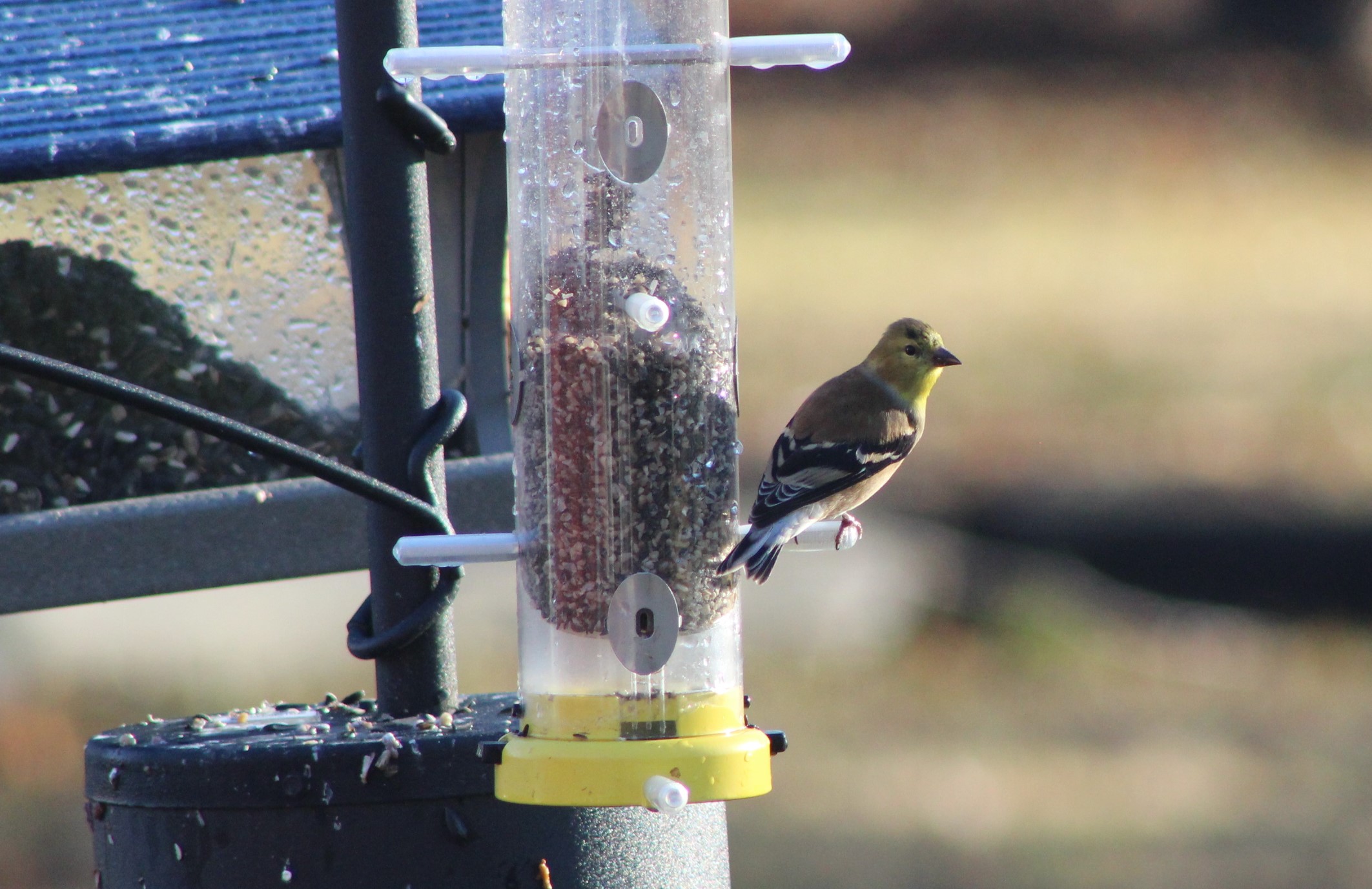We put up a bird feeder station this year, and the Eastern Goldfinches (Spinus tristis) have decided it’s an easier way to get that 100% of their body weight serving of seeds than foraging for them in the fence rows and woods. A mixed flock of a couple dozen birds flits about, snacking, perching, fluttering or, head into the wind, coasting for a moment or two on the northwest wind as it whips around the corner of the house. They don’t stay still, perching, flying, changing places constantly. They’ll eat most of the seed we put out this morning and will survive to do it again tomorrow.
The goldfinches are hardy little creatures, choosing to stay here for the winter instead of flying south. Perhaps that’s why we Iowans have chosen the Eastern goldfinch as our state bird. Or maybe it’s because although in winter males and females all wear olive drab, in summer, he puts on a coat of bright yellow-gold. He’s popular, though. New Jersey and Washington State have also claimed him as their state bird.
All birds molt. Their feathers get bedraggled from daily contact with the environment, and a fresh coat will help them fly efficiently and stay warm in the winter. They don’t lose their feathers all at once, though. They drop out the old ones in a predetermined sequence, allowing the new ones to grow in. This way they never end up naked. It may take up to eight weeks to conclude the process. The goldfinch is unusual in that it molts twice a year, once in the fall and again in the spring. In the fall, beginning around September, the bright yellow feathers of the male and the less conspicuous browns of the female drop off one by one, and new olive drab feathers take their place. Being less conspicuous in winter helps them avoid hungry owls. Come spring, though, it’s time for a wardrobe change. The ladies get another olive drab suit, but the males deck themselves out in bright gold with black accents on the wings and tail, and a black cap. To do this, they conduct a second complete molt, replacing all of their body feathers. This time they leave their wing and tail feathers in place. Their beaks also turn from pink to bright orange.

Photo by: U.S. Fish and Wildlife Service
Whereas some birds, like hummingbirds, have structures in their feathers that reflect a given wave length to make their colors, the goldfinch dyes his feathers yellow with pigments from the food he eats. The goldfinch’s new outfit is intended to attract females, and the females are quite discerning regarding the fitness of a potential mate. If his colors are bright and his feathers are perfect, she presumes that he is healthy and eating well—a good sign. If his colors are dull, or his feathers misshapen, she rejects him. Courtship occurs in late July, and chicks are hatched in August and September when the seeds of thistle, teasel, dandelion, ragweed, mullein, cosmos, goatsbeard, sunflower, and alder are readily available.
Goldie is a small finch. He’s only about five inches long beak to tail tip with a wing span of about eight inches. He weighs only a fraction of an ounce and is often spotted clinging with his dexterous feet to a seed head, chowing down on the seeds that he extracts with his conical, purpose-built beak.
For now, along with purple finches, downy woodpeckers, sparrows, juncos, chickadees, nuthatches, cardinals and the occasional blue jay, they’re busy emptying the bird feeder and waiting for spring.
Photo by Author

1 comment